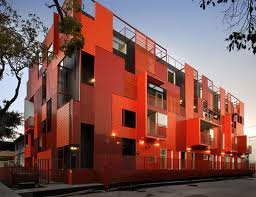The segment of the housing industry that caters to those home buyers and renters who are 55+ years old saw gradual but steady improvement in 2011. This trend is expected to continue throughout 2012 as more baby boomers turn 55 and seek new homes and communities that offer the lifestyle they desire. However, since the conditions of the current overall housing market are limiting their ability to sell their existing homes, this market is not recovering as quickly as might have been expected.
Like the overall single-family housing market, the 55+ housing segment is facing a slow but steady recovery. "NAHB is projecting that the number of housing starts in 55+ communities will increase 18 percent to 53,200 units in 2012, and another 25 percent, to 66,600 in 2013," said Paul Emrath, NAHB's vice president of survey and housing policy research.
Emrath said the multifamily segment of the 55+ housing market is doing particularly well, with an estimated 57% increase to 21,300 starts in 2011, and further increases in the forecast of 25,400 new apartments in 2012 and 29,100 in 2013.
According to NAHB, the 55+ housing market should continue to gradually improve over the next few years. "Nevertheless, this market remains fragile as many people in this sector who would like to purchase a new home are having difficulties selling their existing homes," noted Emrath. "The issues constraining their ability to sell are the same issues restraining the overall single-family housing market - low appraisals, a large supply of foreclosures and tighter mortgage lending criteria."
Knowing their customer base is important for builders' success in the current economic climate. "The 55+ builders who are doing well in these challenging times are innovative and creative and are in touch with their customer base," said W. Don Whyte, president of Kennecott Land in South Jordan, Utah, and incoming chairman of NAHB's 50+ Housing Council. "Successful builders also continually conduct market research on buyer's preferences and needs."
"Meeting the needs of buyers in the 55+ market involves having a more focused and targeted strategy on how to design, build and market new homes," said Whyte. "Successful builders and developers in the current market will encompass this approach." BD+C
Related Stories
| Nov 9, 2010
Designing a library? Don’t focus on books
How do you design a library when print books are no longer its core business? Turn them into massive study halls. That’s what designers did at the University of Amsterdam, where they transformed the existing 27,000-sf library into a study center—without any visible books. About 2,000 students visit the facility daily and encounter workspaces instead of stacks.
| Nov 9, 2010
Turner Construction report: Green buildings still on the agenda
Green buildings continue to be on the agenda for real estate owners, developers, and corporate owner-occupants, according to the Turner 2010 Green Building Market Barometer. Key findings: Almost 90% of respondents said it was extremely or very likely they would incorporate energy-efficiency improvements in their new construction or renovation project, and 60% expected to incorporate improvements to water efficiency, indoor environmental quality, and green materials.
| Nov 5, 2010
New Millennium’s Gary Heasley on BIM, LEED, and the nonresidential market
Gary Heasley, president of New Millennium Building Systems, Fort Wayne, Ind., and EVP of its parent company, Steel Dynamics, Inc., tells BD+C’s Robert Cassidy about the Steel Joist Manufacturer’s westward expansion, its push to create BIM tools for its products, LEED, and the outlook for the nonresidential construction market.
| Nov 3, 2010
First of three green labs opens at Iowa State University
Designed by ZGF Architects, in association with OPN Architects, the Biorenewable Research Laboratory on the Ames campus of Iowa State University is the first of three projects completed as part of the school’s Biorenewables Complex. The 71,800-sf LEED Gold project is one of three wings that will make up the 210,000-sf complex.
| Nov 3, 2010
Park’s green education center a lesson in sustainability
The new Cantigny Outdoor Education Center, located within the 500-acre Cantigny Park in Wheaton, Ill., earned LEED Silver. Designed by DLA Architects, the 3,100-sf multipurpose center will serve patrons of the park’s golf courses, museums, and display garden, one of the largest such gardens in the Midwest.
| Nov 3, 2010
Public works complex gets eco-friendly addition
The renovation and expansion of the public works operations facility in Wilmette, Ill., including a 5,000-sf addition that houses administrative and engineering offices, locker rooms, and a lunch room/meeting room, is seeking LEED Gold certification.
| Nov 3, 2010
Sailing center sets course for energy efficiency, sustainability
The Milwaukee (Wis.) Community Sailing Center’s new facility on Lake Michigan counts a geothermal heating and cooling system among its sustainable features. The facility was designed for the nonprofit instructional sailing organization with energy efficiency and low operating costs in mind.
| Nov 3, 2010
Seattle University’s expanded library trying for LEED Gold
Pfeiffer Partners Architects, in collaboration with Mithun Architects, programmed, planned, and designed the $55 million renovation and expansion of Lemieux Library and McGoldrick Learning Commons at Seattle University. The LEED-Gold-designed facility’s green features include daylighting, sustainable and recycled materials, and a rain garden.
| Nov 3, 2010
Recreation center targets student health, earns LEED Platinum
Not only is the student recreation center at the University of Arizona, Tucson, the hub of student life but its new 54,000-sf addition is also super-green, having recently attained LEED Platinum certification.
| Nov 3, 2010
New church in Connecticut will serve a growing congregation
Tocci Building Companies will start digging next June for the Black Rock Congregational Church in Fairfield, Conn. Designed by Wiles Architects, the 103,000-sf multiuse facility will feature a 900-person worship center with tiered stadium seating, a children’s worship center, a chapel, an auditorium, a gymnasium, educational space, administrative offices, commercial kitchen, and a welcome center with library and lounge.
















